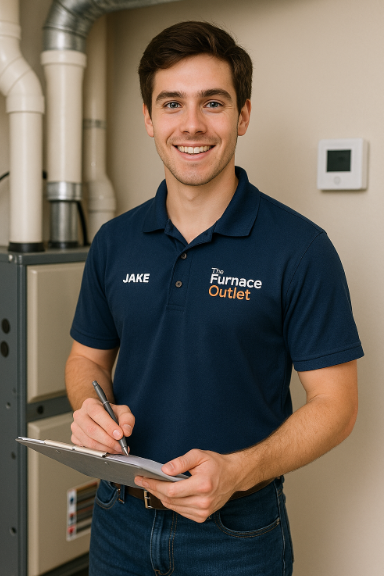Hey everyone, Jake Lawson here. If you’ve ever wondered how your air conditioning pump works or why it’s so crucial to your system’s performance, you’re in the right place. Today, we’re diving into the ins and outs of air conditioning unit pumps, exploring how a pump for AC keeps your home cool, why maintenance is important, and what to consider when installing or upgrading your system.
Whether you’re dealing with a standalone air conditioner, a split system, or a high-capacity HVAC system, understanding the role of the AC pump will help you maximize efficiency and extend the life of your equipment.
What Is an Air Conditioning Pump?
An air conditioning pump is a component that circulates water or refrigerant through your air conditioning system. In some units, it’s responsible for moving coolant to transfer heat, while in others—like hydronic or chilled water systems—it ensures consistent circulation to maintain the desired temperature.
Key functions include:
-
Moving chilled water or refrigerant through coils.
-
Supporting heat exchange between indoor and outdoor units.
-
Maintaining proper system pressure for efficient cooling.
Without a properly functioning air conditioning unit pump, your system may struggle to cool your home effectively, potentially causing higher energy bills or even system damage.
For an overview of AC components and their roles, check out HVAC.com’s air conditioner guide.
How an AC Pump Works
A pump for AC works by creating a pressure differential that moves the cooling fluid through your system. Here’s a simplified breakdown:
-
Intake: The pump draws in refrigerant or chilled water from the evaporator or chilled water coil.
-
Pressurization: The pump increases the pressure, which allows the fluid to flow efficiently through pipes or coils.
-
Distribution: Pressurized fluid circulates to indoor units or air handlers, transferring heat away from your living space.
-
Return Flow: The fluid returns to the condenser or chiller to repeat the cooling cycle.
This continuous loop ensures your air conditioning system maintains consistent indoor temperatures.
For a more technical explanation of AC fluid dynamics, visit Energy.gov’s air conditioning efficiency page.
Types of Air Conditioning Pumps
Not all AC systems use the same type of pump. Depending on your system, you may encounter:
1. Centrifugal Pumps
-
Most common in commercial HVAC and large residential systems.
-
Efficient for moving large volumes of water or refrigerant.
-
Operates quietly when properly maintained.
2. Reciprocating Pumps
-
Used in smaller systems or specialized units.
-
Provides high pressure for precise cooling cycles.
-
Often louder than centrifugal pumps but compact.
3. Variable-Speed Pumps
-
Adjusts flow rate based on cooling demand.
-
Improves energy efficiency by reducing unnecessary circulation.
-
Common in modern high-efficiency systems.
Understanding which type of air conditioning unit pump your system uses can help with maintenance and troubleshooting.
Signs Your Air Conditioning Pump Needs Attention
A failing pump for AC can compromise comfort and energy efficiency. Watch for these warning signs:
-
Uneven Cooling: Rooms may feel hotter or cooler than others.
-
Strange Noises: Grinding, rattling, or humming near the pump.
-
High Energy Bills: The system works harder to circulate refrigerant.
-
Leaks or Corrosion: Visible fluid leaks near the pump housing.
-
Frequent Cycling: The system turns on and off more often than usual.
Early detection and maintenance can prevent costly repairs or total system failure.
For more tips on AC troubleshooting, see HVAC Talk’s maintenance forum.
Maintaining Your Air Conditioning Pump
Proper maintenance keeps your air conditioning unit pump running efficiently:
-
Clean Strainers and Filters: Prevent debris from restricting flow.
-
Lubricate Bearings: Reduce friction and wear in mechanical components.
-
Check Alignment: Misaligned pumps can cause vibration and damage.
-
Inspect Seals: Prevent leaks and maintain pressure.
-
Monitor Flow Rates and Pressure: Ensure the pump is operating within manufacturer specifications.
Regular maintenance extends the lifespan of your pump for AC and keeps your system operating at peak efficiency.
For a comprehensive maintenance checklist, visit Energy Star – HVAC Maintenance Tips.
Choosing the Right Pump for Your Air Conditioning System
Selecting the proper air conditioning pump is essential:
-
System Size: Match the pump’s flow capacity to your system’s BTU or tonnage rating.
-
Efficiency: Consider variable-speed pumps for energy savings.
-
Noise Level: For residential use, quieter pumps improve comfort.
-
Durability: Look for high-quality materials like stainless steel or corrosion-resistant components.
-
Compatibility: Ensure the pump works with your existing refrigerant or water-based system.
Proper sizing and selection prevent strain on your AC system and reduce operational costs.
For expert guidance on HVAC system components, see HVAC School’s technical resources.
Upgrading Your Air Conditioning Pump
If your existing pump is underperforming, upgrading can enhance system performance:
-
Variable-Speed Replacement: Improves energy efficiency and comfort.
-
High-Capacity Pumps: Ideal for larger homes or commercial spaces.
-
Smart Integration: Modern pumps can communicate with thermostats and building automation systems.
Upgrading a pump for AC may involve consulting a certified HVAC technician, especially when dealing with refrigerants or complex split systems.
Conclusion
An air conditioning pump is a vital component that keeps your air conditioning unit circulating refrigerant or chilled water efficiently. Whether you’re troubleshooting issues, performing routine maintenance, or considering an upgrade, understanding the role of a pump for AC is essential for maximizing comfort and energy efficiency.
For homeowners looking for a complete, high-efficiency solution, the Goodman 3-Ton 14.5 SEER2 R32 Bundle offers reliable cooling and modern technology, including R32 refrigerant and optimized system components, making it a great complement to any well-maintained AC pump.







